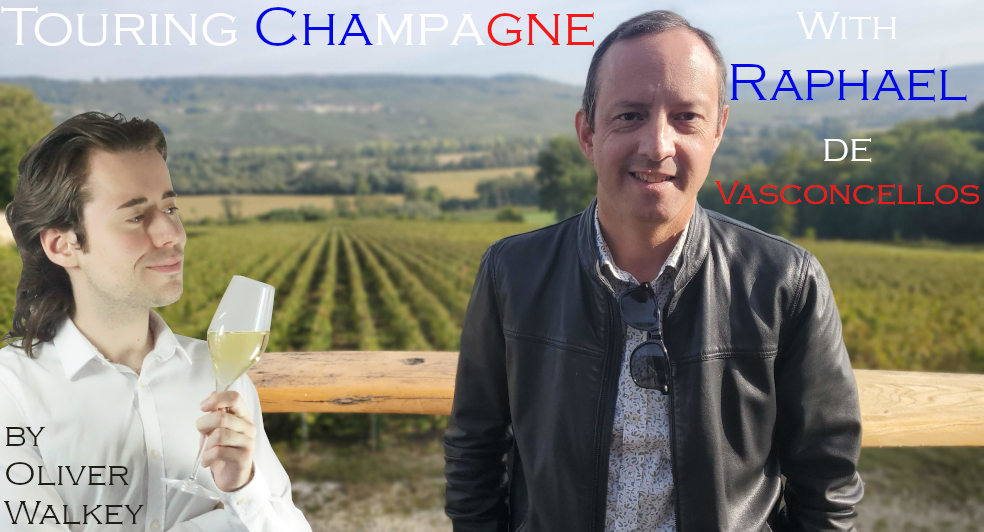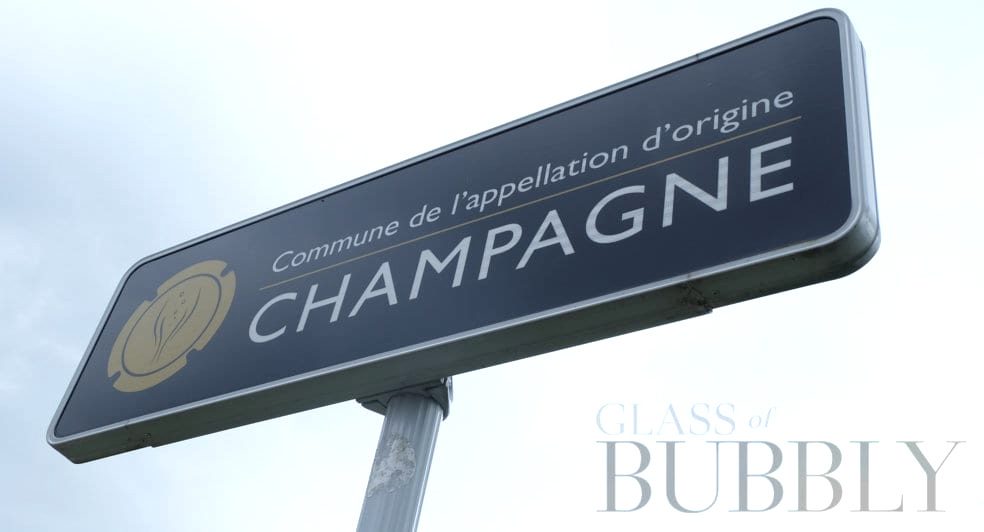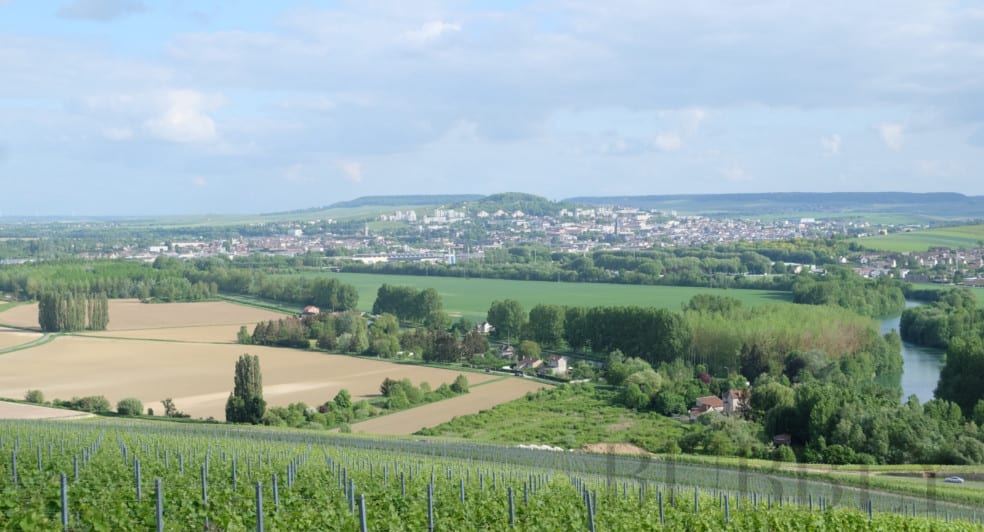Touring Champagne With Raphael de Vasconcellos
26th April 2024

Exploring the Champagne Region is one of the ‘must’ moments for any bubbly lover, but no matter how many times you travel to the region, there are still more Champagne houses and villages to explore, knowing where to start isn’t too difficult, you simply venture to the Avenue de Champagne, the world’s most expensive road to insure, but then from there, do you start exploring the streets surrounding or travel to a different village?
In this feature we speak with Raphael de Vasconcellos, a Tour Guide in Champagne, from Rio de Janeiro, Brazil, we got the opportunity to speak with him and discovered a little about his life and some excellent Champagne experiences.
Tell Us About Yourself & What Inspired You To Become Involved In The Wine Industry?
“I’m a brainy guy from Rio de Janeiro, Brazil, a quarter French from my mother’s side. I grew up dreaming about living in France and, after 10 unfruitful years working in sustainable products design, I moved to Paris in 2010. By then I was interested in Wine and History, but it wasn’t until I started becoming more experienced in French tourism that I had the opportunity to visit different wineries in the Loire, Burgundy and Champagne regions. I came with tourists, listened to their stories and explanations, and some of them let me give a tour in their place, like Plou et Fils near Amboise, seeing that I’d already visited many times.
I spent 4 years taking tourists to see Paris, Versailles, Champagne, Loire, Bruges, Saint-Michel and other parts of France. In late 2014, my Brazilian wife and I had our first son, so we moved out of expensive Paris to the neighbouring region of Champagne, where, because I speak some languages, I figured I could find a job as a guide in one of the Champagne Houses. I was hired by Veuve Clicquot in 2015 for a season as a cellar guide. They gave us training, we visited the whole production, we had a day class with legendary vineyard master Christian Renard, and we tasted some LVMH cuvées with the winemaker’s team. One of them was Cyril Brun, who went on to become Charles Haidsieck’s cellar master and best winemaker in the world! So it was a lot of fun to be introduced like that into this fantastic world of the wine industry.
Although I really enjoyed going into the 2,000 years old chalk pit mines every day, giving tastings of La Grande Dame 2004, Millésime 1989, 1990, or the simply delicious Carte Rosé, I struggled a bit repeating the same speech many times a day, which impacted my capacity to be warm and welcoming, so they let me go at the end of the season. It was the first wake up call for me in terms of learning how to be a really good professional guide. The second came during my next role. I was soon offered a job as a guide in France Intense for their Champagne team, which meant leading full day tours that took people to varied Champagne Houses and growers.
This was a period of immense learning for me. The company was founded by Pascal Mineau, a former sommelier at 5 star hotels abroad and in a French ministry, who has a passionate vision about tourism and gastronomy, and wine in particular. This approach taught me to find the passion in the subjects we were touching, the building of the Cathedral of Reims, the caring of the vines, the making of the wines, and the tasting of this wonderful nectar called Champagne. If I already liked wine, I became enamoured and took every opportunity to responsibly taste the different cuvées and millésimes. With friends from the wine industry, I created our own tasting brotherhood, and I took a WSET level 2 class. I started going to wine fairs whenever possible, and I had the opportunity to participate as a taster in the 2021 (8th place, just behind France!) and the 2022 (last!) World Tasting Championship of the LRVF representing Brazil.
Although I’m still a humble student, I’m forever on the wine path!”

Do You Remember Your First Experience With Champagne? When It Was And What Kind?
“I remember drinking Champagne at weddings in Brazil, without paying too much attention, and then I remember opening Veuve Clicquot in a Copacabana reveillon with friends! But my first spiritual experience with Champagne was on September 16th 2016, when I went on a Billecart-Salmon visit and tasting, and had the Louis Salmon Blanc de Blancs 1996. It was a revelation! I felt all those aromas of honey, flowers, salinity, and a very strong feeling of eating a passion fruit mousse, which I love! Then and there I finally understood how deep and delicately a wine can impact your feelings, your senses.”
For Anyone Looking To Explore Champagne For The First Time, How Would You Suggest They Begin?

“For the first timers, I recommend sticking with the basics: Reims and Epernay, the two most important cities in the local wine tradition. Reims is easier to access and to stay in. It’s the largest city in Champagne, with 200 thousand souls, offering a good range of hotels and restaurants, including the 3 starred l’Assiette Champenoise. It’s probably the best place in the world for Champagne diversity in bars. You can find the rare and old cuvées in the fine dining, and the upcoming growers in the Champagne bars, some of them among the best you can find, like le Wine Bar by Le Vintage. The Cathedral and the adjoining Palais du Tau, where catholic France was born and where Louis XV drank sparkling Champagne during his coronation is a must, one of the most beautiful gothic buildings in Europe. The city center is really cozy, there is a small but interesting shopping neighbourhood, and especially in the summer you can roam and get lost to enjoy a lazy day wandering about. The Champagne Houses you can visit or just taste are Veuve Clicquot, Mümm, Pommery, Ruinart, Charles de Cazanove, Lanson, G. H. Martel and Taittinger. Pol Couronne has a shop in town, and Thiénot is opening a central visit center. Ubers aren’t ubiquitous yet in Reims, so I recommend asking the restaurants and Houses to call a cab for you.
Epernay is its own thing, a smaller town of 25 thousand people, a really small but nice city center, and the magnificent Avenue de Champagne. You can come by train from Paris too, or from Reims. There are some nice accommodations like the Villa Eugène and the various B&Bs on the Avenue, and several delicious options for restaurants, like la Grillade Gourmande and le Théâtre. The advantage of staying here is really the access to the Champagne Houses that line up the famous street: Moët et Chandon, Perrier-Jouët, Collard-Picard, Esterlin, Leclerc-Briant, André Bergère, Michel Gonnet, Paul-Etienne-Saint-Germain, Mercier, Elodie D, Comtesse Lafond, and, during the summer, Mailliard. Pol Roger is there too, but they are only open for wine pros with an appointment. Other highlights in the Avenue de Champagne are the Townhall, which was the house of Rachel Moët with its beautiful garden, and the Wine Museum, originally the house of Perrier-Jouët’s founders’ son, Charles Perrier.
From both towns, you can drive to the nearby villages and visit the myriad of grower Champagne offerings. I suggest Rilly-la-Montagne near Reims and Hautvillers near Epernay.”

During Your Time In The Wine Industry, What’s The Most Surprising & Interesting Thing You’ve Learnt?
“One surprising thing I learned was how subtle and enormous the work is behind Champagne making. If you are Krug’s winemaker, or grower Gerbais in Celles-sur-Ources, you have a difficult task in front of you, to uphold 2 thousand years of tradition and deliver something that comforts and inspires. Champagne makers feel the pressure to maintain a healthy distance from their competition. Global warming, market recognition and technology made their lives easier, but it also raised the bar and the need for evolution never stops. While I was understanding all that, and especially when I re-edited Dom Pérignon’s apprentice manuscript book, it dawned on me that if you want to understand how Champagne wine came to be, you have to think backwards.
It wasn’t that someone or a group of bright individuals set up a course to create the perfect sparkling wine from scratch. From the Celts creating the wood barrel to the Romans bringing the vines to northern France, to the centuries of selecting the good mutations, varietals and specimens, Champagne is the result of nature showing what was hidden, nudging the growers and makers into making the best they were capable of doing. And by the late 1600s, the best they could do was a novel sparkling wine! Yes, the Brits invented sparkling wine, no question, but they used French wine to do it, and it was probably mostly from Champagne.
I have to add here an anecdote from 2022’s tasting championship at Ayala’s HQ in Aÿ. The first wine, as usual, was a sparkling wine served in a carafe. All teams swirled, sniffed and sipped, starting to take notes and discuss. After everyone gave their papers, the announcer started with the varietal: “Chardonnay, a blanc de blancs” he said. Everyone nodded, happy. “2014”, he said, leaving some satisfied, some frustrated. But then: “Nyetimber, England” was a hard blow for all the tasters in the room. Not one of the 25 plus teams got the country right, much less the producer. Probably all teams wrote down Champagne because although you could probably tell there was something off, it was as precise, tense, and deep, as an excellent Champagne could be. What a shock. It was our Paris Judgement!”
As A Tour Guide In Champagne, What Are Some Of The Hidden Gems Of The Region, That You’ve Been Able To Explore?
“I really enjoy visiting Châlons-en-Champagne, the region’s administrative capital, and Troyes, the largest collection of timber framing houses in the region, and the largest town near the Côte des Bars. Both are between 1 and 2 hours from Reims by car. In Châlons, you can visit the beautiful House Joseph Perrier. They also have original Roman chalk pit mines, and their Champagne range is fantastic. I’ve never actually visited any Côte des Bars winery, a shameful gap in my résumé, but you can easily visit wineries in Montgueux and Bar sur Seine from Troyes.
I’m fascinated by War History, so I find it very interesting to visit the Surrender Museum where the Nazis signed in Reims, the nearby WW1 Fort de la Pompelle and the French, British, Italian, German? Russian and American military cemeteries around the area.”
Where’s The Most Memorable Place You’ve Enjoyed A Glass of Bubbly?
“Besides the Champagne I had with my wife on the Bateaux Parisiens cruise in the Seine, looking at the sparkling Eiffel Tower during dinner, it was in a hot air balloon overlooking Champagne Avenue. They take people up every 15 minutes during good weather, and you can take a Champagne glass with you! Another place I can strongly recall was at Champagne Tribaut in Hautvillers. It was a perfect summer day in 2023, they served us the tasting and I was awestruck by the magnificent view they have of Hautvillers and the Marne River valley. The vines were green, the harvest was coming, it was very picturesque.”
Additional Question Asked On Behalf Of Champagne Collectors – What’s The Oldest Vintage Champagne You’ve Tasted?
“It was a Veuve Clicquot 1980 millésime, which couldn’t be finished by the production as the cork was ageing. We opened it in 2015 and it was good! Surprisingly fresh and bubbly, with the aromas holding well, although there was a touch too much of oxidation. It was a pleasant experience overall. Besides that, I had their 1989 white and 1990 Rosé many times, which they are still selling! They are really good, completely whole and fresh and bubbly, with the added layers of complexity and just enough oxidation to give that caramelized fruit aroma that I love.”
Thank you Raphael, for sharing your words, knowledge and experience with us and we at Glass of Bubbly wish you the very best for the future!
Images of Raphael de Vasconcellos, belong to Raphael de Vasconcellos. Glass of Bubbly was granted permission to use them.
![]()
Oliver Walkey
Champagne and Sparkling Wine Writer, Focused on Bringing the Exciting and Fascinating World of Bubbly to You.
